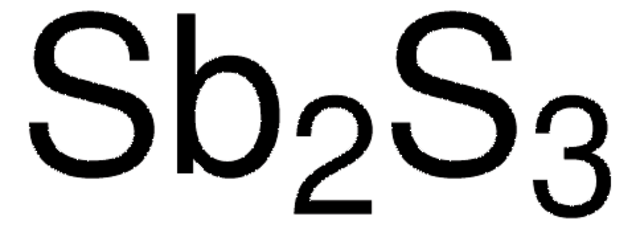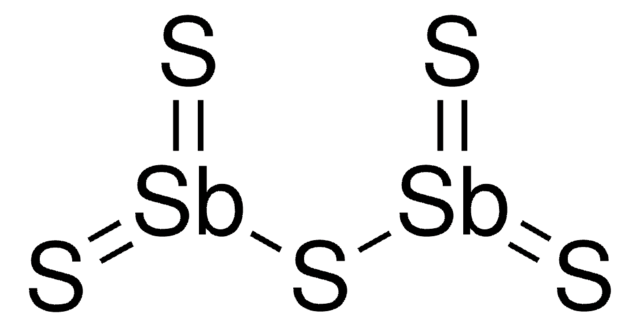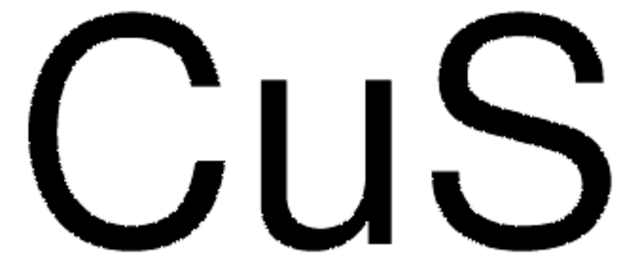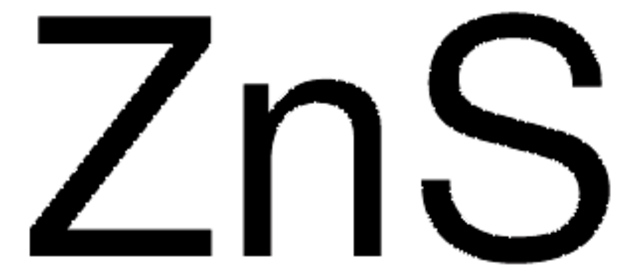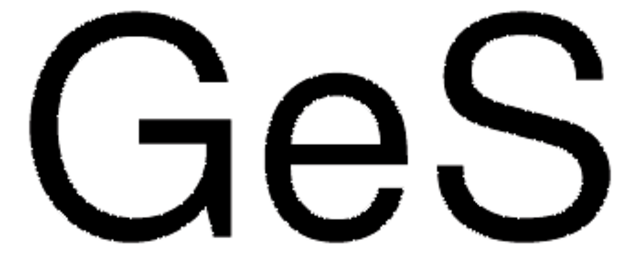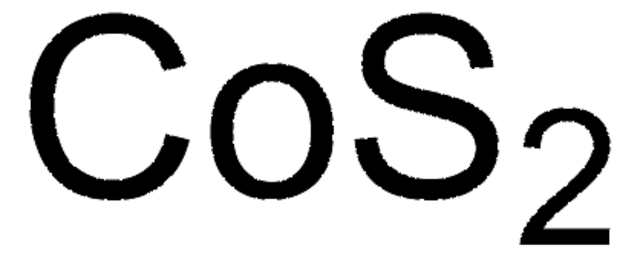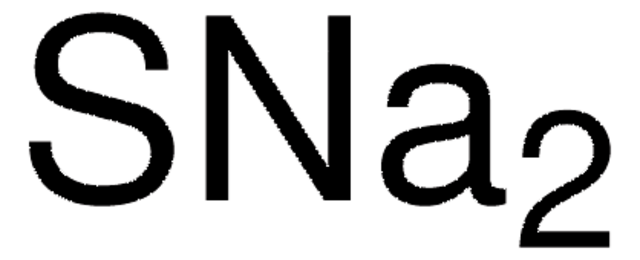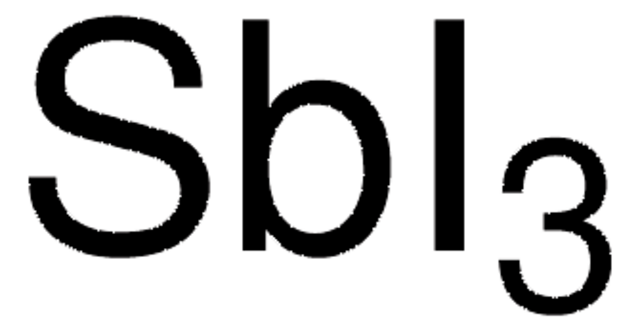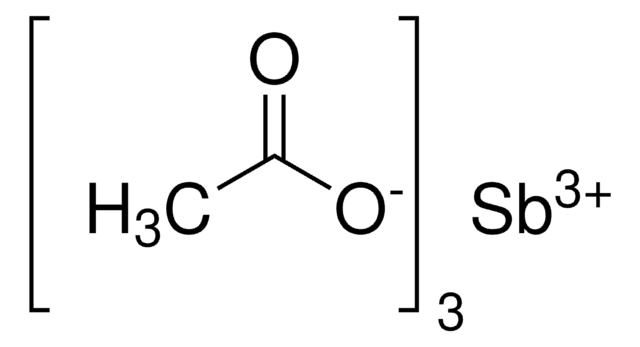Wszystkie zdjęcia(3)
Kluczowe dokumenty
About This Item
Wzór liniowy:
Sb2S3
Numer CAS:
Masa cząsteczkowa:
339.72
Numer WE:
Numer MDL:
Kod UNSPSC:
12352300
eCl@ss:
38080208
Identyfikator substancji w PubChem:
NACRES:
NA.23
Polecane produkty
Formularz
powder
Poziom jakości
mp
550 °C (lit.)
gęstość
4.64 g/mL at 25 °C (lit.)
ciąg SMILES
S=[Sb]S[Sb]=S
InChI
1S/3S.2Sb
Klucz InChI
IHBMMJGTJFPEQY-UHFFFAOYSA-N
Szukasz podobnych produktów? Odwiedź Przewodnik dotyczący porównywania produktów
Powiązane kategorie
Hasło ostrzegawcze
Warning
Zwroty wskazujące rodzaj zagrożenia
Zwroty wskazujące środki ostrożności
Klasyfikacja zagrożeń
Aquatic Chronic 3 - Carc. 2 - STOT RE 2
Organy docelowe
Lungs
Kod klasy składowania
6.1C - Combustible acute toxic Cat.3 / toxic compounds or compounds which causing chronic effects
Klasa zagrożenia wodnego (WGK)
WGK 2
Temperatura zapłonu (°F)
Not applicable
Temperatura zapłonu (°C)
Not applicable
Środki ochrony indywidualnej
dust mask type N95 (US), Eyeshields, Gloves
Wybierz jedną z najnowszych wersji:
Masz już ten produkt?
Dokumenty związane z niedawno zakupionymi produktami zostały zamieszczone w Bibliotece dokumentów.
Klienci oglądali również te produkty
Justin Varghese et al.
Nano letters, 12(2), 868-872 (2012-01-25)
We report the first observation of piezoelectricity and ferroelectricity in individual Sb(2)S(3) nanowires embedded in anodic alumina templates. Switching spectroscopy-piezoresponse force microscopy (SS-PFM) measurements demonstrate that individual, c-axis-oriented Sb(2)S(3) nanowires exhibit ferroelectric as well as piezoelectric switching behavior. Sb(2)S(3) nanowires
C Tsopelas
Journal of nuclear medicine : official publication, Society of Nuclear Medicine, 42(3), 460-466 (2001-05-05)
Colloidal particle size is an important characteristic to consider when choosing a radiopharmaceutical for mapping sentinel nodes in lymphoscintigraphy. Photon correlation spectroscopy (PCS) and transmission electron microscopy (TEM) were used to determine the particle size of antimony trisulfide and rhenium
B Kalin
Acta radiologica. Supplementum, 385, 1-24 (1993-01-01)
Today bone marrow scintigraphy is performed by imaging either the reticuloendothelial system by means of colloids or the hematopoietic marrow with granulocytes. When visualizing the marrow with radiolabeled colloids most of the administered activity will be taken up by the
Chris Tsopelas
Applied radiation and isotopes : including data, instrumentation and methods for use in agriculture, industry and medicine, 59(5-6), 321-328 (2003-11-19)
The chemistry of antimony trisulphide colloid (ATC) was examined to elucidate the radiolabelling mechanism with 99mTcO4(-). Ion exchange chromatography and atomic absorption spectrophotometry techniques determined ATC to be resistant to hydrolysis in 0.1M hydrochloric acid (HCl) at 25 degrees C
Z Radovanovic et al.
European journal of surgical oncology : the journal of the European Society of Surgical Oncology and the British Association of Surgical Oncology, 30(9), 913-917 (2004-10-23)
Sentinel lymph node biopsy in breast cancer can be used to select patients in which axillary lymph node dissection could be avoided. In this study we compared the value of two methods for identification of sentinel node (SN) using either
Nasz zespół naukowców ma doświadczenie we wszystkich obszarach badań, w tym w naukach przyrodniczych, materiałoznawstwie, syntezie chemicznej, chromatografii, analityce i wielu innych dziedzinach.
Skontaktuj się z zespołem ds. pomocy technicznej